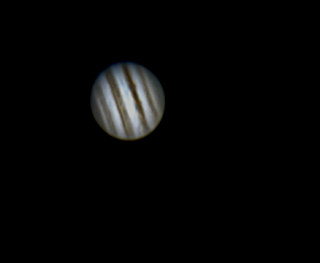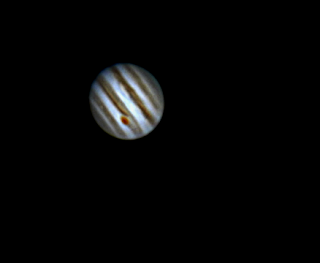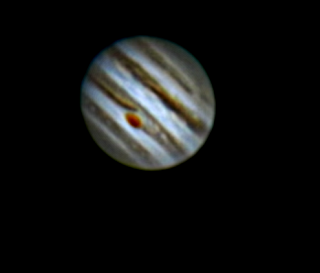The Moon is currently in a waxing gibbous phase, which means its almost a full Moon. The Moon played a small negative factor in last nights observing, but overall didn't affect the images too badly. After this months full Moon, which occurs on January 23rd, I recommend a wonderful opportunity to pull out your telescopes and cameras and view the largest planet in our solar system, as well as 4 other bright planets (Mars, Saturn, Venus, and Mercury) all in our night sky at the same time!
Stay tuned for a future post on exactly when and how to spot Mercury here in the Coachella Valley in the coming weeks. It is currently very low on the horizon at dawn and hard to catch with the mountains and palm trees in the way.
I have pieced together a GIF of this evenings Jupiter pictures showing the planetary rotation and movement of the great red spot. This was a really fun project to put together and I could not be happier with the end results.
Next, we have the images that make up the GIF above. These are all stacked images with Avistack, 1800 frames to produce the final images. Taken with a Celestron Nexstar 6SE and a Phillips SPC900NC webcam.
Here are my final images of Jupiter for the night. I wanted to catch the moons Io and Ganymede, as well as a close up of the great red spot and a bit more of a magnification on Jupiter in general, enjoy!
The Great Red Spot
Jupiter and Io
Jupiter and Io
Jupiter, Io and Ganymede

















No comments:
Post a Comment